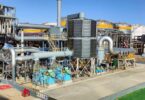There are significant variations in air quality across London classrooms, according to a new study from the University of Surrey.
Sixty classrooms across ten schools in the capital took part in the research. Scientists measured pollution, humidity, temperature and carbon dioxide levels.
Professor Prashant Kumar, Director of the Global Centre for Clean Air Research (GCARE) at the University of Surrey, said:
“Over 7,800 English schools are in areas with too much air pollution. Yet even within these schools, we’ve found a huge range of factors that make a difference – from the size of the classroom to whether the floor is carpeted.
“This is exciting – knowledge is power, and our study in London gives schools everywhere the tools to improve their air quality. Given how much of their life our kids spend at school, this could make a big difference to their health.”
Previous studies focus on just one school or a single environmental factor. By studying a range of variables in 60 classrooms across 10 London schools, this major new study could spot patterns that could be of value to schools everywhere.
Significantly, while opening the windows could reduce air pollution, PM10 particle pollution was reduced by a further 30% when this natural ventilation was combined with mechanical ventilation – through ducts, vents and fans.
Classrooms with hardwood floors had twice as much PM10 pollution in the air than carpeted rooms. Daily sweeping could improve this, however.
Larger classrooms appeared to be better ventilated than smaller ones. Crucially, where schools were near busy roads, classrooms on upper floors or further from the roads had less fine particle pollution. Schools should consider moving classes with more vulnerable children accordingly.
The study is published in the Journal of Building Engineering.







